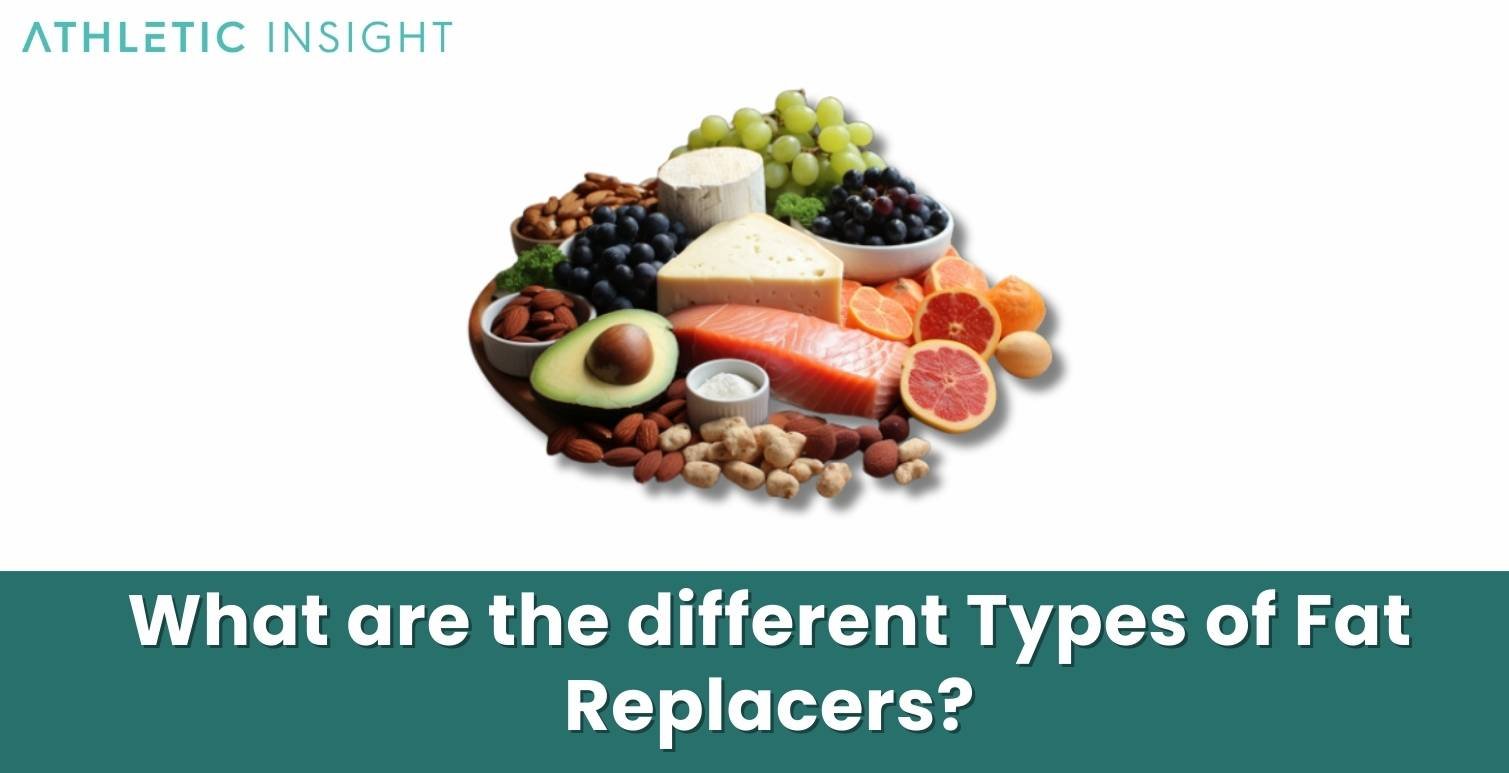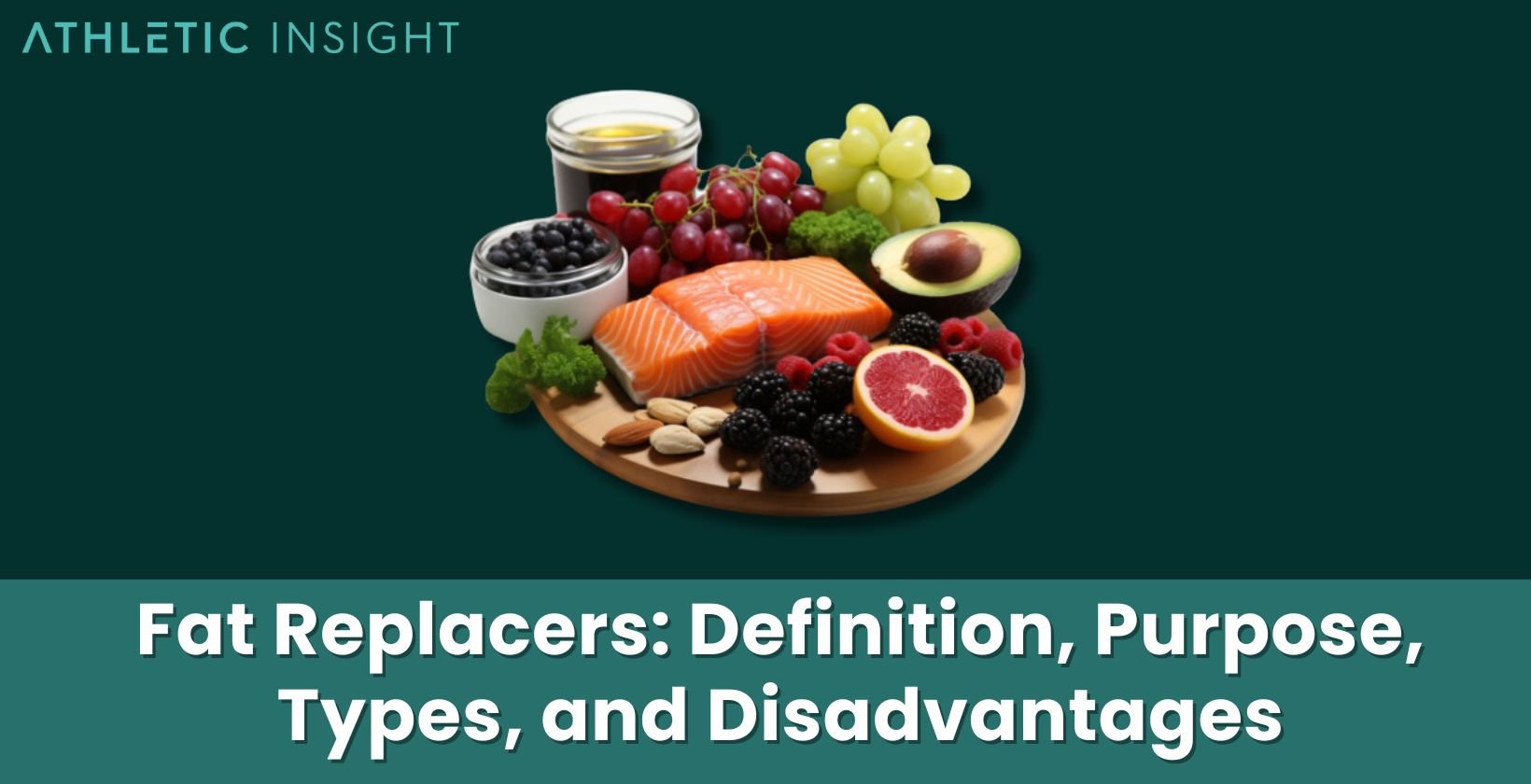In the realm of food science, a special category of substances holds significance – fat replacers. These innovative substances have revolutionized the way we consume food, particularly aiding those on a quest for a healthier lifestyle. Emphasizing on fewer calories without compromising taste, fat replacers are in several of the foods you enjoy daily.
Fat replacers, as their name implies, are substances used to replace fat in processed, low-fat foods. The result is foods with reduced fat content but the same palatable sensation as their full-fat counterparts. Unveiling the definition, purpose, types, and disadvantages of fat replacers is essential for a comprehensive understanding of these substances.
What is a Fat Replacer?
Fat replacer, a scientific marvel, is a substance used to substitute fat in food items. It is integrated into processed foods to minimize the fat content, consequently reducing the caloric value. These components are designed in a way to replicate the texture and taste of fat, granting an almost identical eating experience.
These innovative elements exhibit a few key characteristics. Primarily, fat replacers retain the essence of fat by emulating its texture and flavor. Secondly, despite lowering the fat content, they maintain the food’s integrity by preventing it from becoming dry or bland. Lastly, fat replacers are deemed safe for consumption by regulatory bodies like the FDA, ensuring consumers’ wellbeing.
What is the other term for Fat Replacers?
Fat replacers are also commonly known as fat substitutes. The name ‘substitute’ elucidates its function, signifying its use to replace fat in food products. This term is prevalent in both the food industry and nutritional science, further emphasizing its global acceptance and usage.
The term ‘fat substitute’ is used to denote any ingredient or compound used in place of regular fat during food processing. Its purpose remains the same – reducing the fat content in the food while maintaining the flavor, texture, and overall acceptability of the final product.
How do Fat Replacers work?
Fat replacers operate on a simple principle: simulating the taste and texture of fat while contributing fewer calories. By mimicking the physical and chemical properties of fat, they blend seamlessly into the food matrix, offering a satisfying sensory experience.
When incorporated into food, fat replacers interact with other components, often forming a network structure that traps water, similar to how fat would. They essentially “trick” the palate into believing it’s experiencing the richness of fat, when in fact, the calorie intake is significantly reduced.
What is the primary purpose of Fat Replacers?
The primary purpose of fat replacers is to decrease the fat content in foods, thereby reducing the calorie count. This characteristic is essential in the formulation of low-fat and fat-free food products, helping to combat obesity and associated health issues.
Another critical purpose is maintaining the sensory attributes of the food, such as taste, texture, and appearance. They allow consumers to enjoy the same flavors and mouthfeel that they would with full-fat foods, encouraging healthier food choices without compromising taste.
What is the importance of Fat Replacers?
Fat replacers hold pivotal importance in the field of nutrition and food science. They are key enablers of the low-fat and no-fat food industry, catering to the growing demand for healthier options. By reducing caloric intake, they contribute to weight management and prevention of obesity.
Their importance extends beyond health benefits. Fat replacers ensure that healthier food choices do not come at the cost of taste and texture. They allow manufacturers to develop products that align with health-conscious trends while maintaining consumer acceptability and enjoyment, thus shaping the food landscape to be more nutrition-friendly.
What are the different Types of Fat Replacers?
Fat replacers are typically classified into three categories: fat-based, protein-based, and carbohydrate-based. Each type mimics the properties of fat to different extents and is chosen based on the nature of the food product and the desired nutritional profile.

The variety of these categories ensures the flexibility in use across different food applications, enhancing the versatility of fat replacers. From baked goods to dairy products, each type has its specific use, enabling the creation of a wide range of low-fat foods.
- Fat-based
- Protein-based
- Carbohydrate-based
1. Fat-based
Fat-based replacers are modified fat molecules. They have been altered in a way that reduces or even eliminates their ability to contribute calories. While they retain many of the properties of regular fats, our bodies are unable to fully absorb them, leading to lower calorie intake.
They work by providing the same richness and mouthfeel as regular fats but are resistant to digestion. Examples include Olestra, a synthetic fat substitute that is not absorbed by the body and thus, is calorie-free, and Salatrim, another reduced-calorie fat used in bakery products.
2. Protein-based
Protein-based fat replacers are derived from proteins. They are designed to imitate the creamy texture of fat, providing body and fullness to food products. They are typically used in creamy products like yogurt, cheese, and salad dressings.
These replacers function by forming a gel-like structure that mimics the texture of fat. Simplesse is a commonly used protein-based fat replacer that is derived from egg whites or milk proteins and contributes to the smooth texture in reduced-fat products.
3. Carbohydrate-based
Carbohydrate-based fat replacers are created from plant-based materials like oats, gums, and starches. These carbohydrates can mimic the texture of fat and are often used in baked goods, dressings, and ice cream.
These substances create a thick, fat-like consistency in foods, and some even contribute to the sweetness. Maltodextrins and cellulose are examples of carbohydrate-based fat replacers, which offer the benefit of being low in calories.
How to Include Fat Replacers in Diet?
Incorporating fat replacers into the diet can be as simple as choosing products labeled as ‘reduced-fat’, ‘low-fat’, or ‘fat-free’. These products, ranging from dairy to baked goods, typically employ fat replacers to achieve their low-fat status. It’s essential to read the product labels to ensure these foods align with your nutritional goals.
Remember, while fat replacers help in reducing calorie intake, balance is key. Opting for a variety of foods from different groups, including fresh fruits, vegetables, lean proteins, and whole grains, alongside reduced-fat products ensures a well-rounded, nutritious diet. Moderation in portion sizes and an active lifestyle should accompany these dietary choices for optimal health.
Are Fat Replacers effective in promoting weight loss?
Fat replacers can indeed aid in weight management. By reducing the fat content in foods, they lower the overall caloric value. Given that fat contains more than double the calories per gram compared to proteins and carbohydrates, this reduction can be significant.
However, it’s essential to remember that eating low-fat or fat-free foods does not provide a free pass for unlimited consumption. Calories can add up from other sources, too, and overeating these foods could still lead to weight gain. Pairing the consumption of foods with fat replacers with portion control and physical activity forms an effective strategy for weight management.
Do Dietitians recommend Fat Replacers?
Dietitians recommend fat replacers as part of a comprehensive dietary plan, particularly for individuals aiming to reduce caloric intake or manage weight. They appreciate the role of these substances in offering lower-fat alternatives without sacrificing taste and texture.

However, dietitians also emphasize a balanced, varied diet rich in whole foods. While fat replacers can play a role in a healthy diet, they should not entirely replace natural, unprocessed foods rich in essential nutrients. Consulting with a dietitian can provide personalized advice on incorporating fat replacers into one’s dietary routine.
What are examples of Fat Replacers?
Fat replacers have found their way into a variety of food products to reduce their fat content. Many items on the grocery store shelves contain these ingredients. For example, reduced-fat margarine is a classic case, often employing fat replacers to slash fat content and calories.
Other examples include low-fat dairy products, such as cheese and yogurt, which might use protein-based fat replacers to achieve a creamy texture. Low-fat baked goods like cookies and cakes often use carbohydrate-based fat replacers to mimic the mouthfeel of fat. Diet beverages and salad dressings also commonly use these substances.
Is avocado a Fat Replacer?
Avocado, while high in healthy monounsaturated fats, is not technically a fat replacer. Fat replacers are substances added to processed foods to simulate the role of fat. Avocado, however, is a natural food that can be used as a healthy fat source in the diet.
Yet, in certain contexts, avocado can play a similar role. Its creamy texture and rich flavor make it a popular substitute for fats in recipes, from spreads to baking. But unlike manufactured fat replacers, avocado brings a host of other nutritional benefits, including fiber and essential vitamins.
What are the disadvantages of Fat Replacers?
While fat replacers come with several benefits, they also have certain drawbacks. One disadvantage is that they can alter the taste and texture of food. Although they aim to mimic fat, they may not fully replicate the eating experience, leading to a less satisfying sensation.
Another drawback to fat replacers is related to nutrition. Fat-soluble vitamins A, D, E, and K require fat for absorption. Low-fat foods using fat replacers may not provide enough fat for these vitamins to be adequately absorbed. While replacing fat, they don’t necessarily replace the other beneficial nutrients found in whole food sources of fat.
Are Fat Replacers safe to consume every day?
Yes, fat replacers are considered safe for daily consumption. They have been tested for safety by various food safety authorities, including the U.S. Food and Drug Administration (FDA). The FDA’s approval signifies they’re safe to eat in the amounts people typically consume.
That being said, it’s important to note that some individuals may experience digestive discomfort when consuming certain fat replacers, such as Olestra. Although not harmful, these side effects can be unpleasant. As with any food product, it’s crucial to observe moderation and balance in the diet.
Are Fat Replacers Good in Nutrition?
Yes, fat replacers offer good nutrition through the benefit of reducing calorie content, aiding in weight management. They can also contribute to a lower intake of unhealthy fats, like trans fats and saturated fats, which are linked to heart disease. These characteristics make them a useful tool in creating healthier food products.

However, they don’t typically offer much in the way of nutritional value themselves. Unlike whole foods, fat replacers don’t provide essential nutrients such as vitamins, minerals, and fiber. Therefore, while they may be beneficial in moderation, they should be part of a varied diet that includes nutrient-dense, whole foods.
What is the difference between a Fat Replacers and Fat Substitute?
While the terms ‘fat replacers’ and ‘fat substitutes’ are sometimes used interchangeably, they do have distinct meanings. Fat replacers refer to substances that take the place of fat in food products, contributing fewer calories. They work by mimicking the properties of fat to reduce the fat and calorie content of foods.
Fat substitutes, on the other hand, are compounds that entirely replace fat in a food product but provide the same number of calories as the original fat. They’re used to change the type of fat in a product rather than reduce its amount. For example, a manufacturer might substitute saturated fats with unsaturated ones to create a healthier product.
Can Fat Replacers help in managing diseases?
Yes, fat replacers have the potential to assist in managing certain health conditions. By reducing the calorie and fat content of foods, they can help individuals with conditions such as obesity, heart disease, and high cholesterol. These health issues often require dietary modifications to decrease fat and calorie intake, which is where fat replacers come into play.
Yet, it’s crucial to remember that managing these conditions isn’t as simple as just reducing fat intake. It also involves increasing the consumption of nutrient-dense foods, maintaining a balanced diet, and leading an active lifestyle. Always consult with a healthcare provider or dietitian for personalized advice on managing these conditions.
Can Fat Replacers affect food taste and texture?
While fat replacers aim to mimic the properties of fat in foods, they do not entirely replicate the exact taste and texture. The sensory characteristics of fat, including its unique mouthfeel and flavor-carrying capabilities, are challenging to match precisely. As a result, foods containing fat replacers might taste slightly different or have a different texture compared to their full-fat counterparts.
However, food technology has advanced significantly, and many fat replacers do an impressive job at approximating the sensory qualities of fat. They enable manufacturers to create lower-fat products that are still enjoyable, helping consumers to lead healthier lives without sacrificing their favorite foods.



